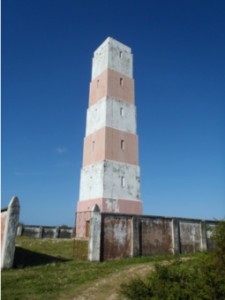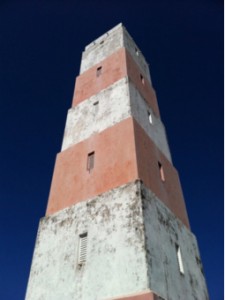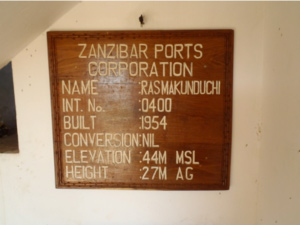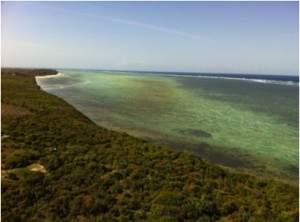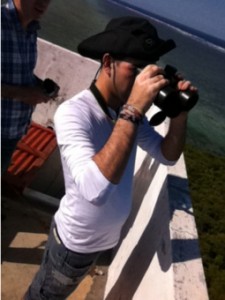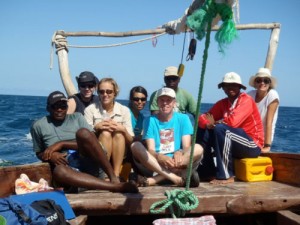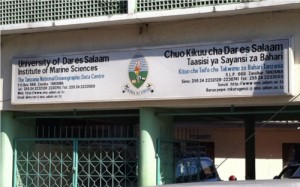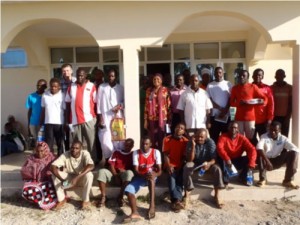Zanzibar Humpback Whale Research Project 2012
Blog 4: Disentanglement and Whale watching 12/07/2012
The humpback whales in Zanzibar coastal waters are being entangled in artisanal drift and bottom set gillnets and in lines to fish traps. This is bad both for the whales that may die unless they can free themselves from the gear and for the fishers that risk losing their equipment and only source of income.

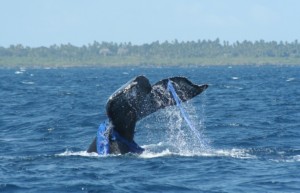 Humpback whales entangled in gillnets off Zanzibar
Humpback whales entangled in gillnets off Zanzibar
To address this problem and to assist in the development of sustainable whale watching as a potential new source of income to the local communities we arranged a 2-day Workshop 10-11 July 2012 at Kizimkazi-Dimbani on the south coast of Zanzibar. The Workshop built on two previous Workshops held in 2010 and 2011. The first day of the Workshop was dedicated to bycatch mitigation using “weak-links” as a possible mitigation measure which was introduced during the previous years’ Workshops and to assess the effectiveness of the disentanglement teams that was trained in 2010. The second day of the Workshop was dedicated to developing guidelines for sustainable whale watching. Each day was introduced by presentations for each Workshop topic by Dr Omar Amir (Zanzibar Ministry of Livestock and Fisheries) and Dr Per Berggren (Newcastle University) followed by discussions and recommendations from the Workshop.

Bycatch mitigation and whale watching Workshop participants
“Weak-links” make the nets break into smaller panels of nets if a whale swims into the net and can thus prevent entanglement which saves both whales and the fishers’ nets. Two “weak-link” nets were made in 2011 and have been trialled during the past year. Mr Pandu, the fisher responsible for the “weak-link” nets, reported that the nets have worked very well and had similar target fish catch as non-modified nets. No whales had been entangled in the “weak-link” nets during the trial year so it was not possible to assess their effectiveness to prevent whale entanglements. Mr Pandu still encouraged all fishers to introduce “weak-links” in their bottom set and drift gillnets. After some discussion all present fishers agreed that they would implement “weak-links” in their nets. Last year fishers were provided with the materials to make “weak-links” and arrangements were made at the Workshop for distribution of the materials.
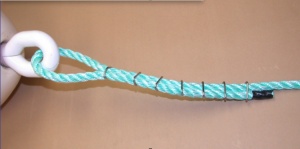
Example of “weak-link” made using hogrings (metal clamps)
©Jamison Smith
The disentanglement teams that were trained in 2010 and 2011 respond to whales that get entangled in nets and use specialised gear provided to free whales from the nets. The teams gave a demonstration at the Workshop of the gear and procedures for how to disentangle whales. There is currently one set of specialised gear and the disentanglement teams expressed the need for a second set so that there would be one available in the south and one in the north of the Island facilitating response in the two main fishing and likely entanglement areas. The Workshop agreed that it would be beneficial to demonstrate the use of the existing gear as an argument when seeking funds for a second set.

Humpback whale by catch entanglement team in action
©Jake Levenson
The second day of the Workshop was dedicated to developing guidelines for sustainable whale watching. The introductory presentations have information about current dolphin tourism in Zanzibar and plans for development of whale watching activities. Further, information was presented on whale watching in other countries and the guidelines and regulations used in e.g. Australia and USA. This information was used as a starting point for discussion and Dr. Berggren further presented suggested guidelines for whale watching that was then discussed. The socio-economy of both dolphin tourism and whale watching was discussed and how the income for the local operators could be improved. Further, the current conflict between gillnet fishers that accidentally kill dolphins as bycatch and dolphin tourism operators was also debated. It was decided that these discussions would continue and be resolved in a meeting following the Workshop.
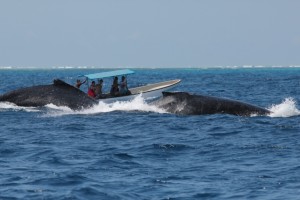
Humpback whale watching off Zanzibar
Overall the Workshop was very successful with participants agreeing to use “weak-links” to mitigate whale bycatch in gillnets and agreement on the need to adopt guidelines for best practice for dolphin tourism and whale watching. Dr. Amir informed the Workshop that the Ministry of Livestock and Fisheries are preparing regulations for both fisheries and tourism activities within the Menai Bay and Mnemba Island Conservation areas. The Workshop was organised jointly by the Zanzibar Ministry of Livestock and Fisheries, the Institute of Marine Sciences, University of Dar es Salaam, with support from the Zanzibar Humpback Whale Research Project, the University of Newcastle, the US National Oceanic and Atmospheric Administration (NOAA) and the International Fund for Animal Welfare (IFAW). There were over 40 participants with representation from most stakeholders including: Government, fishers and their organisations, Kizimkazi Dolphin Tourism Operators Association (KIDOTOA) and the Menai Bay Conservation Area representatives and Researchers.
Photographs © Zanzibar Humpback whale Project

